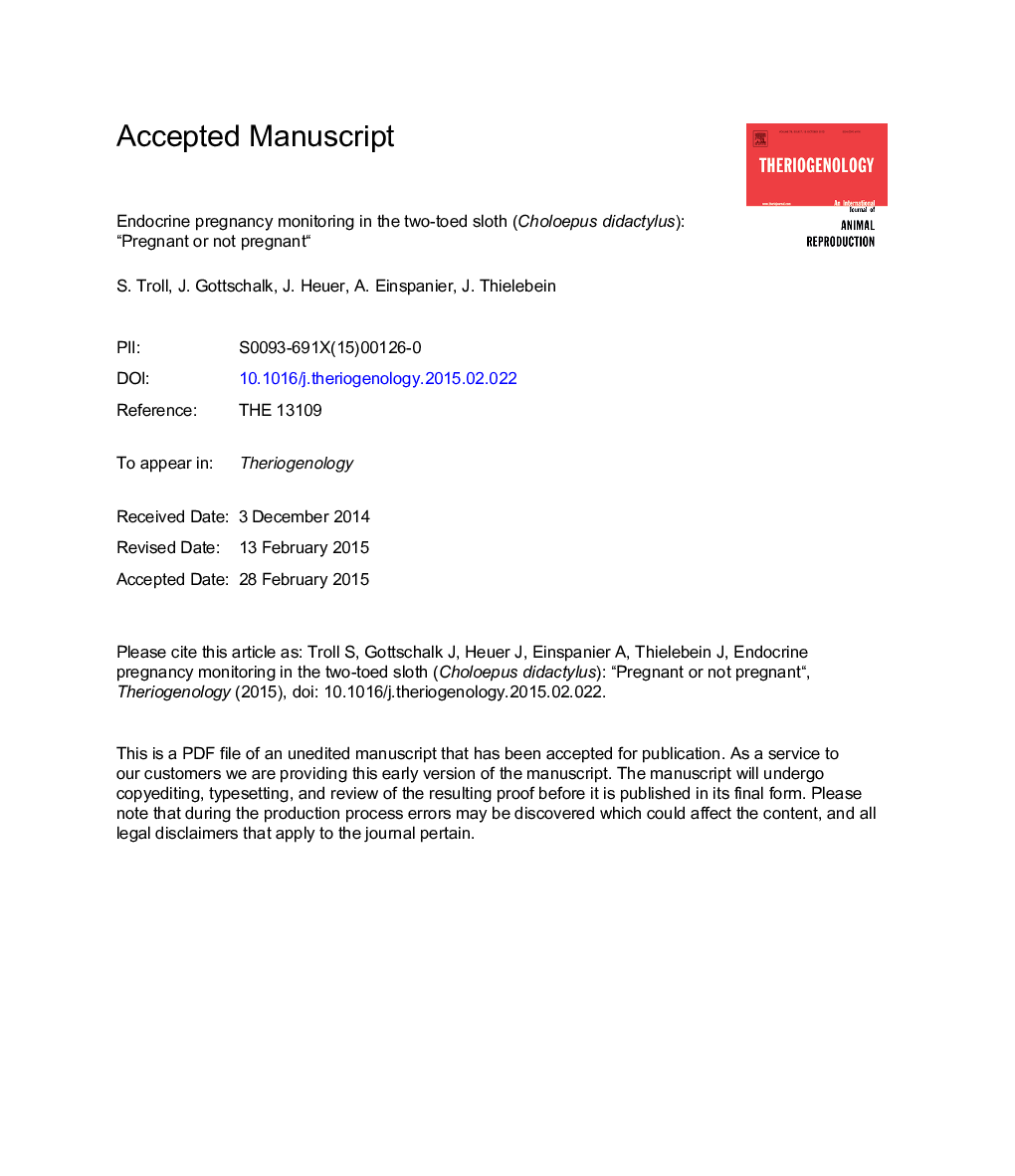| کد مقاله | کد نشریه | سال انتشار | مقاله انگلیسی | نسخه تمام متن |
|---|---|---|---|---|
| 10891757 | 1082062 | 2015 | 26 صفحه PDF | دانلود رایگان |
عنوان انگلیسی مقاله ISI
Endocrine pregnancy monitoring in the two-toed sloth (Choloepus didactylus): “Pregnant or not pregnant”
دانلود مقاله + سفارش ترجمه
دانلود مقاله ISI انگلیسی
رایگان برای ایرانیان
کلمات کلیدی
موضوعات مرتبط
علوم زیستی و بیوفناوری
علوم کشاورزی و بیولوژیک
علوم دامی و جانورشناسی
پیش نمایش صفحه اول مقاله

چکیده انگلیسی
Progesterone (P4), pregnanediol glucuronide (PdG), estradiol-17β (E2), and estrone sulfate (E1S) were measured in the feces of four female two-toed sloths (Choloepus didactylus) for early pregnancy diagnosis. For individual feces assignment, the examined female sloths were fed with a turquoise food colorant every second day. Fecal samples were collected one to four times per week, depending on the defecation rate throughout the pregnancies and the postpartum periods. The complete course of pregnancy was subdivided into three 16-week intervals (trimester of pregnancy, TP1-3) and a 5-week post-partum period after birth. Progesterone and PdG concentrations started to increase above luteal phase levels 3 weeks after conception (P = 0.028 and 0.005, respectively). At the beginning of TP1, P4 concentrations averaged 345.0 ± 283.0 ng/g and increased approximately 100- to 300-fold to a peak of 7588.0 ± 6717.0 ng/g over the TP3. Progesterone concentrations were considerably lower than PdG concentrations that started with 3206.0 ± 1500.0 ng/g at TP1 and increased up to 12.8556.0 ± 53.744.0 ng/g until birth. In contrast, mean concentrations of E2 (8.2 ± 2.4-11.7 ± 4.2 ng/g) and E1S (12.2 ± 6.7-22.9 ± 13.0 ng/g) elevated insignificantly and were not suitable for pregnancy detection. All hormones analyzed decreased rapidly within the first weeks after birth. Progesterone and PdG, as well as E2 and E1S, highly significantly correlated (r = 0.602, P < 0.001 and r = 0.497, P < 0.001, respectively) at TP1. During the TP2, only P4 and PdG significantly correlated (TP2: r = 0.661, P < 0.001 and postpartum period: r = 0.616, P = 0.009). In summary, only P4 metabolite concentrations were suitable to determine the status of reproduction in the two-toed sloth. Thereby, PdG was ideally suited to diagnose early pregnancy because it was more sensitive and detected pregnancy 2 weeks earlier than P4.
ناشر
Database: Elsevier - ScienceDirect (ساینس دایرکت)
Journal: Theriogenology - Volume 84, Issue 1, 1 July 2015, Pages 137-144
Journal: Theriogenology - Volume 84, Issue 1, 1 July 2015, Pages 137-144
نویسندگان
S. Troll, J. Gottschalk, J. Heuer, A. Einspanier, J. Thielebein,